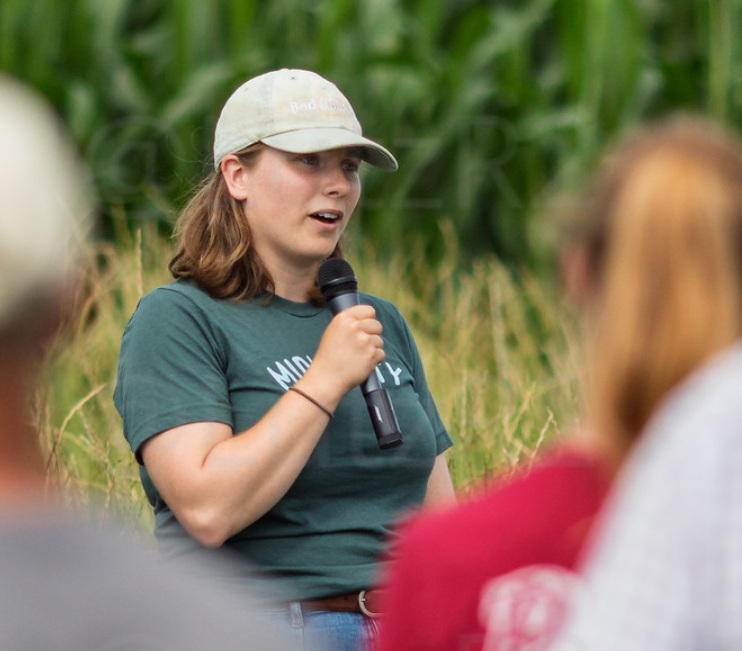
Hi, I’m Clare! I grew up in one of the most beautiful places in the world, Iowa’s Driftless Area. After my mom succeeded in dragging me out of the woods, I attended the University of Iowa, majoring in Physics with a minor in Geography and a certificate in Sustainability, before coming to the University of Wisconsin-Madison for a Masters in Agroecology and now a PhD in Environment & Resources.
Genuinely, for as long as I can remember, I have been thinking about the interlocking challenges of protecting the environment (AKA, the place where we all live) and ensuring a good quality of life for us all. Being from Iowa, I know that agriculture must play a major role in both sides of that equation. I believe that interdisciplinary research can help us in identifying paths to a better future, and I am grateful every day that I get to participate in the process.
When I am not deep in the weeds of a research question, I am deep in the weeds of my garden alongside my beloved cat, Tommy. I also do quite a lot of mending clothes, thrift shopping, biking, and telling fantastic stories with my friends through the game Dungeons and Dragons.
Dietz, C.L., Jackson, R.D., Ruark, M.D., Sanford G.R. Soil carbon maintained by perennial grasslands over 30 years but lost in field crop systems in a temperate Mollisol. Commun Earth Environ 5, 360 (2024). https://doi.org/10.1038/s43247-024-01500-w.
For my Masters work, I studied how different annual and perennial cropping systems common to the Upper Midwest affected soil carbon stocks, finding that perennial grasslands stabilized soil carbon, something row crop systems failed to do. Now, as a PhD candidate, I am building on that work by studying an oft-touted avenue to get more grasslands on the landscape: converting marginal, or unprofitable, areas in row crop fields to perennial grasslands.
My current research involves three groups of questions:
- How do farmers think about management for marginal areas within their own fields? What barriers or complications exist that prevent changes in management?
- How does our definition of “profitable” affect the extent of these marginal areas? For example, including or excluding costs to shared resources like clean water, safe air, and a stable climate.
- What happens to soil carbon stocks if perennialized areas are switched back to annual crops, as often happens when commodity prices increase and marginal land ceases to be marginal?
To answer these questions, I employ a highly interdisciplinary approach, drawing mainly from sociology (in-depth interviews), agricultural and environmental economics (enterprise budgets, ecosystem service valuation), ecosystem simulation modeling (e.g, the APSIM model), biogeochemistry (net ecosystem carbon balance), and soil science (particulate organic carbon, mineral-associated organic carbon).

